TLDR Both intense pulsed light and long-pulsed diode laser effectively reduced facial hair in women, with no significant difference in satisfaction after 6 months, but intense pulsed light was more painful.
In a study involving 31 hirsute women with normal testosterone levels, both intense pulsed light (IPL) and long-pulsed diode laser (LPDL) treatments were found to significantly reduce facial hair counts. The study, which measured results at 1, 3, and 6 months after the final treatment, showed median hair count reductions of 77%, 53%, and 40% for IPL and 68%, 60%, and 34% for LPDL at these respective time points. By the 6-month follow-up, there was no significant difference in hair reduction, patient assessment of hairiness, or patient satisfaction between the two treatments. However, IPL was associated with higher pain scores compared to LPDL. The efficacy of both treatments declined over the 6-month period. Only 23 of the initial participants were included in the efficacy assessments due to the requirement of maintaining normal or medically normalized testosterone levels throughout the study.
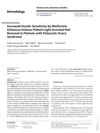 17 citations
,
December 2008 in “Dermatology”
17 citations
,
December 2008 in “Dermatology” Taking metformin with intense-pulsed-light therapy improves hair removal for people with PCOS.
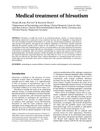 66 citations
,
September 2008 in “Dermatologic therapy”
66 citations
,
September 2008 in “Dermatologic therapy” The conclusion is that the best initial treatment for hirsutism is usually oral contraceptives, with the addition of antiandrogens or insulin sensitizers if needed, and topical eflornithine or laser treatments as supplementary options.
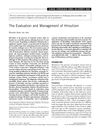 195 citations
,
May 2003 in “Obstetrics and gynecology (New York. 1953. Online)/Obstetrics and gynecology”
195 citations
,
May 2003 in “Obstetrics and gynecology (New York. 1953. Online)/Obstetrics and gynecology” Most women with excess hair growth have an underlying hormonal issue, often treated with medication and hair removal methods.
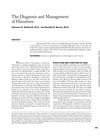 10 citations
,
January 2003 in “Seminars in reproductive medicine”
10 citations
,
January 2003 in “Seminars in reproductive medicine” The article explains how to identify and treat excessive hair growth in women, which can be distressing and may signal other health problems.
57 citations
,
June 1999 in “Dermatologic surgery” Laser hair removal was a significant new method for getting rid of unwanted hair in 1999.
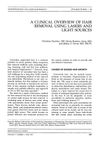 73 citations
,
April 1999 in “Dermatologic Clinics”
73 citations
,
April 1999 in “Dermatologic Clinics” Lasers and light sources can effectively remove hair, work best on fair skin with dark hair, and usually need multiple treatments.
 November 2022 in “Pakistan Armed Forces Medical Journal”
November 2022 in “Pakistan Armed Forces Medical Journal” IPL and diode laser are equally effective for facial hair removal.
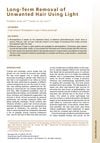 25 citations
,
October 2012 in “Dermatologic clinics”
25 citations
,
October 2012 in “Dermatologic clinics” Laser and light treatments can effectively remove hair long-term.
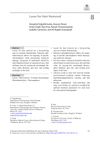 January 2018 in “Springer eBooks”
January 2018 in “Springer eBooks” Lasers are FDA-approved for permanent hair reduction, not removal, and more research is needed to improve treatments.
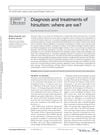 3 citations
,
July 2011 in “Expert Review of Dermatology”
3 citations
,
July 2011 in “Expert Review of Dermatology” Effective treatments for excessive hair growth in women include creams, laser therapy, and medications, with the choice depending on individual needs and potential side effects.
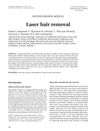 207 citations
,
January 2011 in “Dermatologic Therapy”
207 citations
,
January 2011 in “Dermatologic Therapy” Laser hair removal is the most requested cosmetic procedure and has become a scientifically-based treatment suitable for all skin types.









